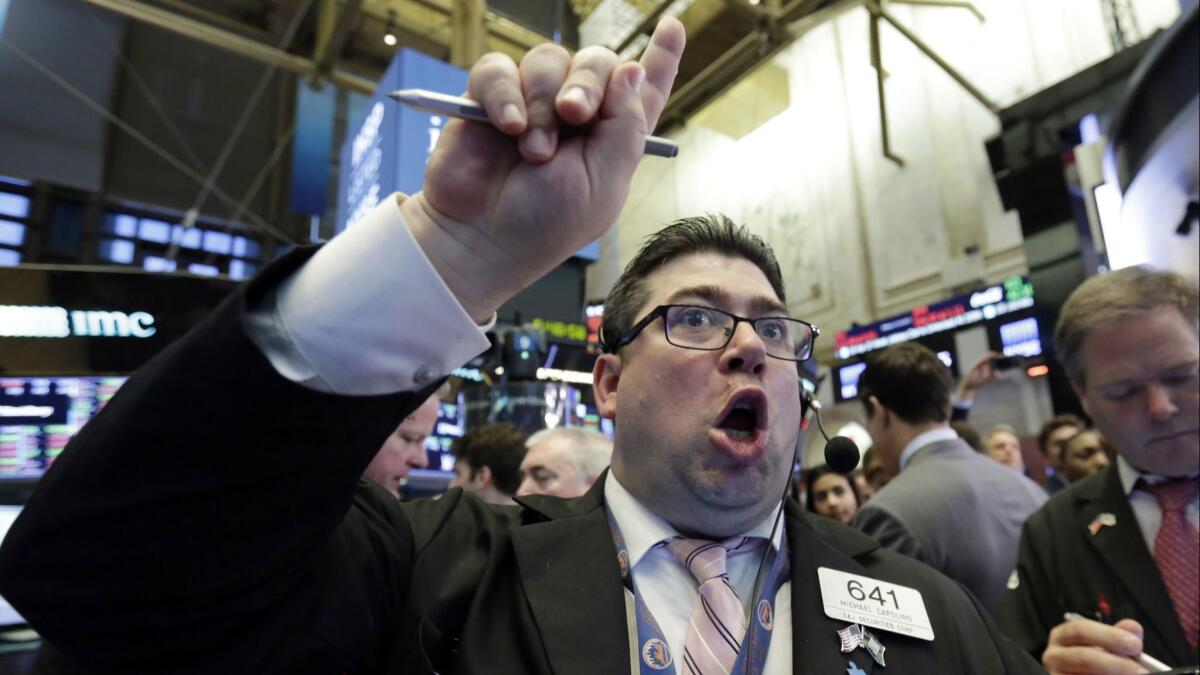Op-Ed: California’s most powerful voice on Wall Street? Its pensions

- Share via
The fight over public pensions in California is almost exclusively described as a dispute between people worried about tax hikes and public servants wanting to get paid what they were promised. But this is only part of the pension story — one focused on the “liability” side of the balance sheet.
What’s missing is the “asset” side of that balance sheet. California’s worker-centered pensions have played an extraordinarily important role as investors over the last 20 years. Moves to dismantle these pension systems could surrender the state’s market power at exactly the wrong time, when it needs it most.
The California Public Employees’ Retirement System, or CalPERS, has led the way to many significant improvements in how companies and markets are run. It led the campaign to unseat the head of the New York Stock Exchange, Richard Grasso, over his runaway compensation, and one against Disney Chairman Michael Eisner amid a host of governance problems at that company in 2004. More recently, after the “London Whale” $6.2-billion trading loss in 2013 revealed governance failures at JPMorgan Chase & Co., CalPERS backed an effort to unseat three of the company’s board members. CalPERS similarly fought a successful three-year battle to get Apple to give shareholders meaningful input in board elections. And in 2014, CalPERS shocked markets when it announced that it was divesting from hedge funds, a move that helped drive down the fees those funds charge.
Other California pensions have played a critical shareholder role as well. The Los Angeles County Employees’ Retirement Assn. fought successfully to “destagger” many corporate boards, which were insulated from the consequences of their actions because no more than one-third of directors stood for election at a time. Thanks to a strong push by LACERA and others, many corporate boards have moved to annual elections of everyone on the board, increasing accountability to all shareholders. The University of California Regents and the San Francisco Employees’ Retirement System of city and county workers brought suit against Enron following its massive accounting fraud in 2003; the $7 billion recovered benefited state workers and taxpayers and also provided some deterrence to corporate fraud.
California’s market strength comes from the fact that its pensions’ stock holdings are collectively and centrally managed.
These funds also largely reflect the interests and views of California’s workforce. In the aftermath of the 2012 school shooting in Newtown, Conn., the California State Teachers’ Retirement System divested its shares in gun manufacturer Remington, which made the rifle used to kill 20 elementary schoolers and six adults. Its leadership on this issue preceded similar moves by investors and consumers in the aftermath of the recent Parkland, Fla., shooting.
Other state and county pension funds engage in shareholder activism, but their sheer size give California’s pensions an outsized voice. They dwarf that of low-tax, small-public-sector Texas, with its far smaller pensions. It’s the inverse of our political system, which disadvantages California by giving it the same representation in the Senate as Wyoming, and effectively ignoring the 4.2-million vote margin it gave to Hillary Clinton over Donald Trump.
But the ability of California pensions to continue exercising that voice is, again and again, threatened in the name of the wrong kind of reform. For example, in March, state Sen. Steve Glazer (D-Orinda) introduced legislation to offer 401(k)s to new state employees so they could opt out of CalPERS. While that bill didn’t make it out of committee, the concept is certainly not dead.
For years, billionaire conservative activists — including Charles and David Koch and Laura and John Arnold — have backed efforts in California and elsewhere to smash and scatter state and local pensions into millions of individually managed accounts. There have been more than 20 attempts to put a state constitutional amendment on the ballot to de-guarantee pension payouts, and there will be more. The stated goal of these efforts is to constrain taxes and government, but the effect will be to greatly reduce the influence of California’s public employees. That’s not empowerment, that’s suicide.
California’s market strength comes from the fact that its pensions’ stock holdings are collectively and centrally managed. There are more than 54 million 401(k) holders in the United States with $5.3 trillion in assets, but because we are atomized, we are meaningless next to the 2 million contributors to $350-billion CalPERS, or the 933,000 contributors to $225-billion CalSTRS, or even the 169,000 members who contribute to the $56-billion LACERA.
I have a 401(k), and no one cares how I vote or who I divest from, or whether I think we should have majority rule in board elections. In fact, as a practical matter, 401(k) accounts are typically invested in a mutual fund that does all the voting on its shareholders’ behalf — and often not the way we would want them to vote.
Yes, there are welcome efforts to organize 401(k) holders to sway the position of mutual funds, but it would take enormous effort to organize them into a powerhouse like a CalPERS or CalSTRS. That doesn’t mean these pensions always get things right. They do not. But at least they have the potential to speak out on Wall Street at a volume that can be heard.
David Webber is a law professor at Boston University and author of the new book, “The Rise of the Working-Class Shareholder: Labor’s Last Best Weapon.” Twitter: @dhwebber1.
Follow the Opinion section on Twitter @latimesopinion and Facebook
More to Read
A cure for the common opinion
Get thought-provoking perspectives with our weekly newsletter.
You may occasionally receive promotional content from the Los Angeles Times.









